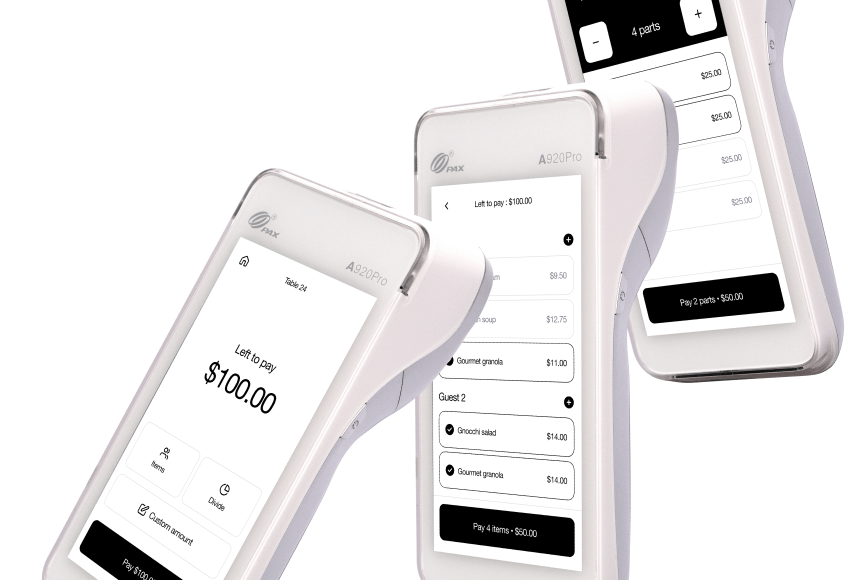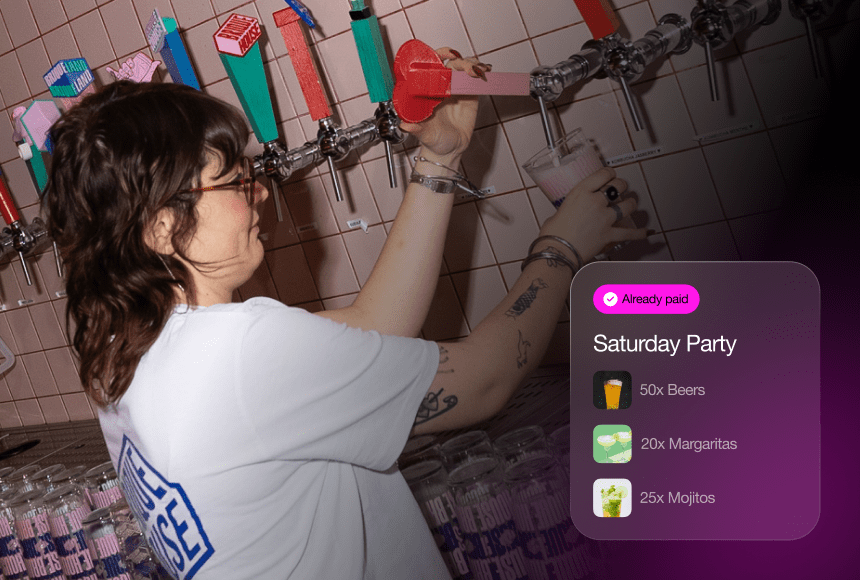
Simplifying Gratuities to Boost Efficiency and Team Morale
Why the Push Toward Digital Tipping?
For restaurant managers, few things are as constant as juggling tasks. From scheduling staff and tweaking menus to satisfying customers, every day presents a flurry of demands. Tucked within these responsibilities lies a routine that can tie up more time than you’d think: handling tips. Once considered a quick end-of-shift chore, managing cash tips now involves ensuring accuracy, distributing them fairly, and confirming that everyone—including the back-of-house—gets their share.
Enter the digital revolution in hospitality. As many diners grow comfortable with contactless or app-based payment methods, it’s only natural that tipping would adapt as well. According to Hospitality Technology, digital solutions for ordering and payment are seeing a steady uptick in adoption (source). When these solutions incorporate automated tip suggestions or digital tip pooling, managers can breathe a sigh of relief. But how exactly does digitizing gratuities help you, the manager, maintain a smooth operation? Here’s a closer look at the obstacles that analog tipping creates, plus concrete ways digital tipping can simplify your day-to-day life.
1. Cutting Down on Confusing End-of-Shift Calculations
The Challenge: After your final guests depart, the last thing your staff wants is to spend an extra 30 minutes sorting through tips, counting coins, or balancing receipts. Meanwhile, you might be verifying numbers, making sure no one’s short, and dealing with the headache of different “tip out” rules.
How Digitizing Tips Helps:
- Automated tracking: When tips are processed through a digital platform—like sunday—the system captures exact totals for each server or shift. No more guesswork on who earned what.
- Real-time updates: Managers can view ongoing tip amounts as sales flow in, rather than waiting until the end of the night to figure it all out.
- Fewer disputes: Transparent, automated calculations mean staff can see clearly how the tip pot is divided, reducing the potential for arguments.
With digital tipping, you say goodbye to rummaging through a register full of small bills or risking manual miscalculations. Instead, staff—and management—can head home sooner and happier.
2. Ensuring Fair and Consistent Distribution
The Challenge: Even the best-intentioned managers can face tough questions about fairness. Perhaps the bar team feels overshadowed by the floor staff, or a server claims they didn’t get their share from a large party’s tip. Manually policing those splits is stressful and prone to error.
How Digitizing Tips Helps:
- Configurable split rules: Many digital systems let you decide the percentages that go to front-of-house, back-of-house, bartenders, or support staff. Once set, these rules apply automatically every shift.
- Transparent records: Any staff member can check how the system calculates their piece of the pie. That transparency heads off suspicions of favoritism or miscalculation.
- Adaptable for special events: Running a holiday brunch with extra help from a second bartender? Adjust the tip split for that shift alone, quickly and easily, without rewriting your entire approach.
By demonstrating a fair, data-driven system, you strengthen trust among employees—a crucial factor in retaining good servers and line cooks alike.
3. Saving Time on Payroll and Accounting
The Challenge: If your team receives tips partly in cash, partly by credit card, and partly via new digital channels, your books can get messy. And the more chaotic your tip records, the harder it can be to meet tax compliance and maintain accurate payroll data.
How Digitizing Tips Helps:
- Simple import to payroll: Integrated solutions can push each staff member’s tip total directly into your payroll software, ensuring wages and tips appear on one easy-to-process record.
- Real-time tax calculations: Because the system tracks every transaction, you can accurately withhold the required taxes if your local regulations call for it.
- Fewer manual corrections: No more hearing from your accountant or bookkeeper about missing tip entries or outdated spreadsheets. It’s all captured automatically.
The result? Less confusion, fewer end-of-month corrections, and a better grip on your finances without burying yourself in paperwork.
4. Boosting Tip Totals Through Smart Prompts
The Challenge: Many diners want to tip but aren’t sure how much is customary, especially if they’re from out of town or aren’t regulars. Servers might try to nudge them toward 18% or 20%, but some guests remain uncertain, or the request can feel awkward.
How Digitizing Tips Helps:
- Default tip percentages: Digital payment platforms often suggest standard percentages—15%, 18%, 20%—right in front of customers. That gentle suggestion can help diners be more generous.
- One-click selection: People on their phones are used to tapping quickly. Present them with a “Tap here for 20%” button, and many will do just that without hesitation.
- Data-driven experiments: You can experiment with default tips (for instance, testing whether displaying 20%, 22%, or 25% leads to higher averages) by switching settings in your digital system.
By making tipping straightforward, you boost total gratuities, which translates directly into happier staff—and that positivity radiates throughout your restaurant.
5. Elevating Employee Morale Through Transparency
The Challenge: Your servers and cooks put in long hours. They want to feel valued, and that starts with trusting how management handles their earnings. If tip distribution is opaque or prone to abrupt changes, frustration can simmer.
How Digitizing Tips Helps:
- Real-time visibility: Staff can log into a dashboard to see how much they’ve earned, either daily or over a pay period. That level of openness fosters trust.
- Set rules mean fewer arguments: Because everyone knows the system’s logic, personal biases or emotional disputes get minimized.
- Motivational environment: When tips are easy to monitor, staff quickly see the impact of busy shifts or great guest feedback—reinforcing the payoff for top-tier service.
When employees feel confident about the tip process, they’re less likely to grumble or suspect foul play—and more likely to invest energy in delighting customers.
6. Simplifying Large Events or Catering
The Challenge: Big group reservations and catered functions can be chaotic—multiple courses, added service fees, and sometimes a wave of last-minute changes. Figuring out the tip breakdown for these big checks can be especially tricky.
How Digitizing Tips Helps:
- Automated service charges: If you add a built-in service fee for large parties, the system can apply it automatically, ensuring staff doesn’t miss any detail.
- All-in-one digital record: No matter how many times the event order changes, the final tip is processed digitally, so you don’t have to revisit partial cash tips or scribbled notes.
- Faster checkout for groups: Groups can each pay via their phone, or one person can foot the entire bill. Either way, it’s easier than passing a check around the table like a hot potato.
By turning big, complicated checks into a streamlined digital transaction, you reduce the chaos that often accompanies large gatherings—and keep the staff happy when everything balances out neatly.
7. Access to Actionable Performance Data
The Challenge: Managing a restaurant is partly about reading the tea leaves of your daily operations. Who’s bringing in the highest sales, which nights yield the best tip averages, and how do promotions affect gratuities? Doing this with manual logs can be time-consuming—and leaves plenty of room for error.
How Digitizing Tips Helps:
- Tip analytics: Some solutions let you view tipping patterns by shift, item category, or server. You see hard data on what’s working and what’s not.
- Comparisons over time: Spot trends—like how a new weekend brunch menu influences average tip amounts, or whether a certain server consistently garners higher (or lower) tips.
- Improved scheduling decisions: Real data can guide you in pairing stronger and weaker servers on specific shifts, leveling up everyone’s performance.
Whether you’re a numbers geek or simply want clarity, these analytics provide a roadmap for refining both your staff development and your operational strategies.
8. Decreased Reliance on Cash Management
The Challenge: Cash has plenty of downsides: potential loss or theft, the inconvenience of constantly making change, and the run to deposit piles of small bills at the end of each week. And if your city is moving toward a cashless culture, ignoring that trend can alienate certain customers and staff preferences.
How Digitizing Tips Helps:
- Reduced chance of theft: The fewer physical bills you handle, the lower the risk of them “disappearing” from the register or tip jar.
- Easier record-keeping: Digital logs mean less time physically counting and cross-verifying envelopes or tip jars. You have a direct record of each card or phone-based transaction.
- Alignment with modern payment trends: In many urban areas, consumers carry less cash. Letting them tip with digital methods meets them where they are—and means they won’t skip tipping due to a lack of bills.
Adopting modern tip solutions doesn’t necessarily mean going fully cashless, but it does reduce your overhead in dealing with physical currency and its associated pitfalls.
9. Building a Customer-Centric Image
The Challenge: In a competitive industry, how do you stand out? Yes, amazing food and personal service matter, but so does convenience. Diners remember if your restaurant embraces new tech or if it feels stuck in time.
How Digitizing Tips Helps:
- Easy tipping on phones: Many people appreciate the chance to finalize everything—bill plus tip—on their smartphone. It’s how they handle everything else, from groceries to ride-shares.
- Contactless convenience: Even post-pandemic, many guests still value fewer physical touchpoints. A digital tip option appeals to them.
- Modern brand identity: Adopting a digitized approach to payments and tipping shows you’re forward-thinking, which can resonate with younger diners and tech enthusiasts alike.
This attention to modern convenience can help build loyalty and word-of-mouth, especially among guests used to frictionless digital experiences everywhere else.
10. Peace of Mind for Management
The Challenge: Even if you love the hustle of restaurant life, overseeing manual tip distribution can be a tedious stressor. The risk of forgetting an entry, shorting someone by accident, or fueling staff rumors weighs on you. You’d rather pour energy into menu innovation, staff training, or marketing strategies, not chasing math errors.
How Digitizing Tips Helps:
- One-time setup, ongoing ease: Once your tip rules (like pool percentages or tip-out guidelines) are set in the system, the process runs automatically shift after shift.
- Fewer disputes, fewer headaches: If a server questions their payout, you have a digital record to show exactly how the system calculated it.
- Better focus on bigger-picture tasks: Freed from daily tip balancing, you can spend more time on marketing, training, or refining the guest experience.
This sense of peace is invaluable, especially in an industry where every hour counts. By letting technology handle the nitty-gritty, you get to focus on the core of your business: delivering great food and hospitality.
Planning Your Digital Tip Transformation
Introducing digitized tips doesn’t happen overnight, but the payoff can be significant. First, evaluate your existing POS or payment systems to see if they offer integrated tipping features. If not, look for a platform (such as sunday) that can tie together payment, tipping, and reporting seamlessly. The best solutions require minimal training, letting staff adapt quickly while giving diners a clear, intuitive interface for adding gratuities.
Remember to communicate openly with your team. Emphasize how the change can reduce confusion and foster fairness. Show them any interface updates, so they feel prepared to explain it to diners. Some staff might initially worry that digital tipping means fewer dollars in their pocket, but real-world cases often suggest the opposite: straightforward tip suggestions prompt higher amounts more often than not.
As for your customers, a simple sign or mention from the server can introduce the new approach. Since more diners have become used to scanning QR codes or paying digitally, the learning curve is usually short. Frame it as a perk: “No app needed—just a quick scan to pay and tip.” That simplicity resonates with busy professionals, families, and millennials who expect quick, frictionless transactions.
Fresh Opportunities for Growth
Digitizing tips touches almost every corner of a restaurant’s operation, from streamlined payroll to boosted staff morale. When done right, the shift frees managers from tedious tasks, puts more money in servers’ pockets, and helps guests leave with a positive last impression. And those benefits can ripple outward, as diners spread the word about a restaurant that “gets” how modern life works—where people live on their phones, and a paper slip at the end of the meal can feel oddly outdated.
Ultimately, rolling out digital tips is about creating a better environment for everyone. Managers reduce daily stress, staff reap the rewards of clarity and possibly higher gratuities, and customers get a fast, transparent checkout. If you’re looking to bring your restaurant in line with the latest expectations—without compromising the personal service that keeps guests coming back—digital tipping solutions may be your next winning move.
So consider taking the leap. After all, your time is better spent perfecting those dishes, mentoring your team, and crafting memorable dining moments—not shuffling crumpled bills in a back office. Digitizing tips leaves you with more bandwidth to do what you love: run a restaurant that stands out and satisfies, shift after shift.
Find out more today
Drop us your details below and we’ll reach out within the next 24h
More tips means a better service.
More tips mean better guest-experience, and better staff-retention.



